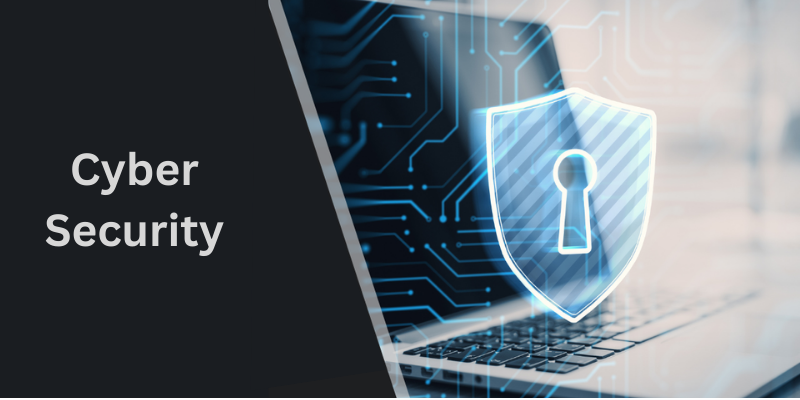Cyber security involves protecting systems, networks, and data from digital attacks, theft, and damage. It encompasses practices and technologies designed to safeguard information and ensure the integrity of digital assets. Multi-Factor Authentication (MFA) strengthens cyber security by adding extra layers of verification, making it more difficult for unauthorized users to gain access. This blog explores how does Multi-Factor Authentication Enhance Cyber Security. Join Cyber Security Course in Gurgaon at FITA Academy, which provides practical knowledge and placement assistance.
Understanding Multi-Factor Authentication (MFA)
Multi-factor authentication (MFA) is a security measure that requires users to provide multiple forms of verification to access an account or system. Unlike traditional password-only authentication, MFA enhances security by combining two or more verification methods, making unauthorized access significantly more challenging.
Components of MFA
MFA involves three primary types of authentication factors:
Something You Know: This factor usually consists of passwords or PINs. While passwords are a standard security measure, they are not without their vulnerabilities. Passwords can be compromised through various means, including phishing attacks, brute-force attacks, or data breaches. Therefore, depending only on passwords can leave accounts vulnerable to unauthorized access.
Something You Have: This factor involves a physical device or token that the user possesses. Common examples include smartphones, hardware tokens, or smart cards. Many MFA systems use one-time passcodes (OTPs) sent to a user’s mobile phone via SMS or generated by an authentication app. This additional layer of verification ensures that even if a password is compromised, the attacker would still need access to the physical device to complete the authentication process.
Something You Are: This factor pertains to biometric verification methods, such as fingerprint scans, facial recognition, or voice patterns. Biometric data provides a unique identifier tied to the individual user, making it extremely difficult for attackers to replicate. Biometrics offer a high level of security because they are inherently linked to the user’s physical characteristics. Explore Cyber Security Course in Kolkata will equip you with the crucial professional skills required to enter the cybersecurity field.
Enhanced Security through MFA
The implementation of MFA greatly enhances security by adding multiple layers of protection. This layered approach ensures that even if one factor is compromised, unauthorized access is still unlikely. For instance, if a password is stolen through a phishing attack, the attacker would still need to bypass the additional verification factor, such as a one-time code sent to the user’s smartphone. This added complexity makes it significantly harder for attackers to gain access to sensitive accounts or systems.
Minimizing the Threat of Credential Theft
Credential theft is a prevalent threat in the digital age, with traditional password-based systems being particularly vulnerable. Phishing attacks, where attackers deceive users into disclosing their passwords, are common and can lead to significant security breaches. MFA mitigates this risk by introducing an additional verification step. Even if an attacker manages to obtain a user’s password, they would still require the secondary verification factor to gain access. This additional layer effectively reduces the likelihood of unauthorized access due to credential theft.
Protecting Against Password-related Attacks
MFA is effective in defending against various password-related attacks. Brute-force attacks, where attackers systematically attempt to guess passwords, are less effective when MFA is in place. For example, an attacker who guesses a password still faces the challenge of bypassing the second factor, which is often a real-time verification process. This added requirement makes brute-force attacks considerably more time-consuming and less feasible. Join the Cyber Security Course in Ahmedabad to avoid the cyber challenges and threats.
Enhancing User Trust and Compliance
Adopting MFA can enhance user trust by demonstrating a strong commitment to safeguarding their sensitive information. In industries such as finance, healthcare, and other sectors with stringent data protection requirements, MFA is often a regulatory compliance necessity. By implementing MFA, organizations not only improve their security posture but also ensure that they meet industry standards and avoid potential regulatory penalties. This proactive approach helps build user confidence and reinforces the organization’s reputation for prioritizing security.
MFA Implementation Challenges
While MFA offers significant security benefits, its implementation can pose challenges. One common issue is user convenience. MFA systems that require multiple steps or additional devices can be perceived as cumbersome by users. Ensuring that MFA solutions are user-friendly and seamlessly integrated into existing systems is crucial for maintaining a positive user experience. Additionally, organizations must address potential compatibility issues and ensure that MFA solutions do not disrupt normal workflows.
Addressing Common Misconceptions
Despite its advantages, there are misconceptions about MFA that can lead to misunderstandings. One common misconception is that MFA is foolproof and provides absolute security. Although MFA greatly improves security, it is not completely resistant to all forms of attacks. For example, sophisticated attacks such as man-in-the-middle attacks can sometimes bypass MFA. However, these types of attacks are relatively rare compared to more common threats. It’s crucial to recognize that while MFA is a powerful tool, it should be integrated into a broader security strategy. Enrolling in the Cyber Security Course in Delhi could be a valuable step for your dream job.
Future of MFA
The future of MFA is likely to see continued advancements as technology evolves. Emerging methods, such as adaptive authentication and advanced biometric technologies, are expected to become more prevalent. Adaptive authentication adjusts security measures based on contextual factors, such as the user’s location or device, providing a more dynamic approach to security. Advancements in biometric verification, including more accurate and less intrusive methods, will further enhance the effectiveness of MFA. These innovations aim to balance security with user convenience, making MFA an integral component of modern cybersecurity strategies.
Multi-factor authentication (MFA) greatly strengthens cyber security by using multiple verification methods, reducing the risk of unauthorized access and credential theft. Although it can have challenges, MFA is essential for improving security and meeting compliance requirements. Enroll in a Cyber Security Course in Jaipur to effectively build your career.
Also Check: Cyber Security Interview Questions and Answers

